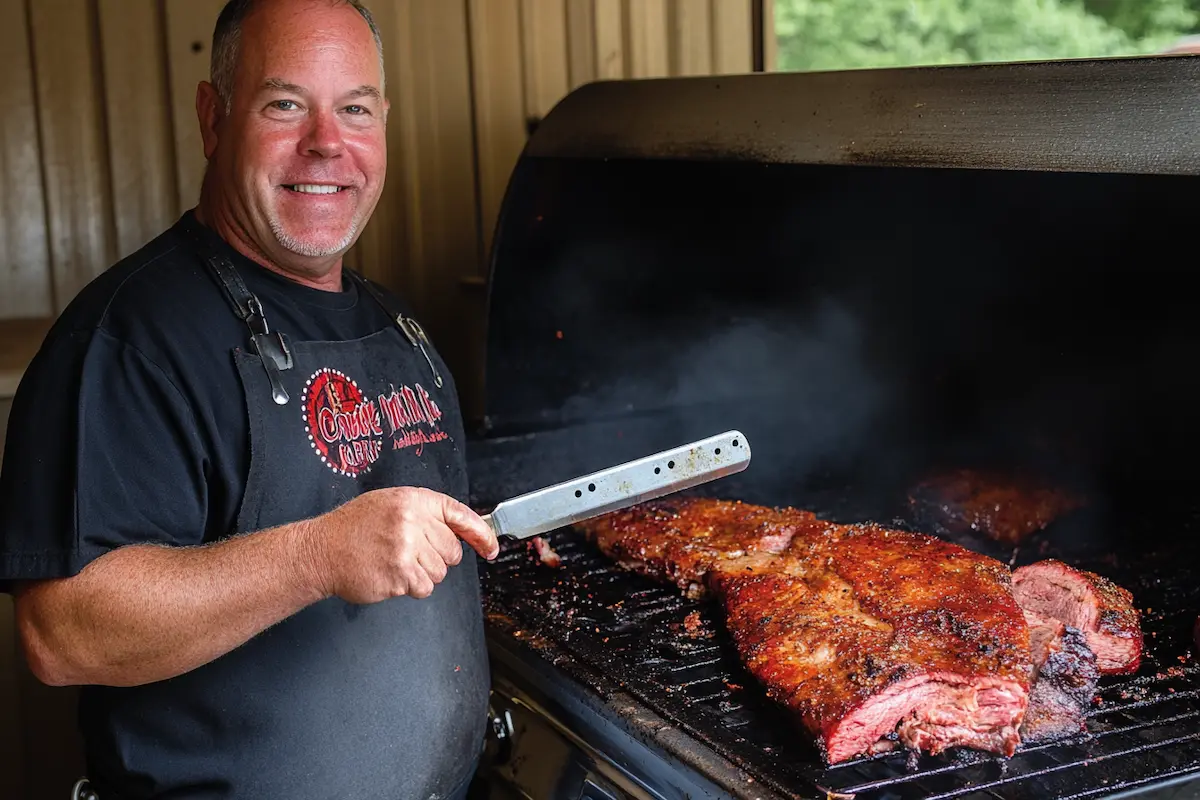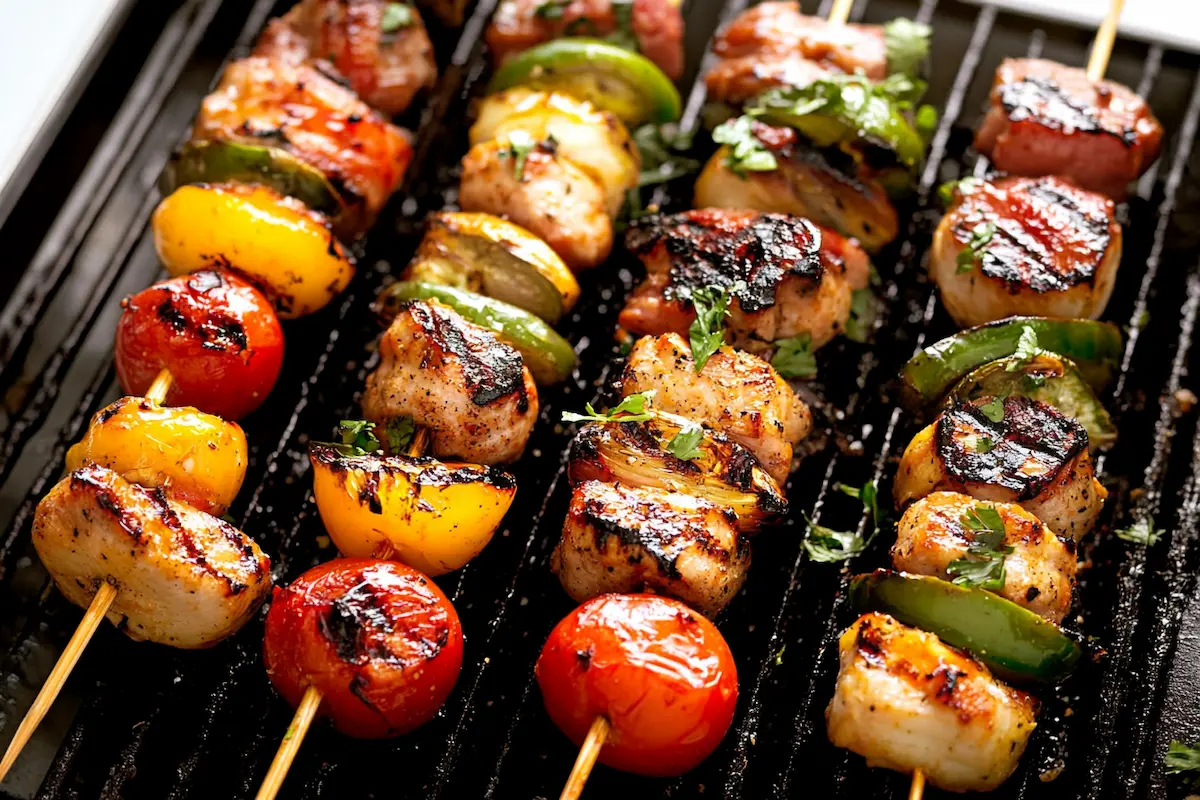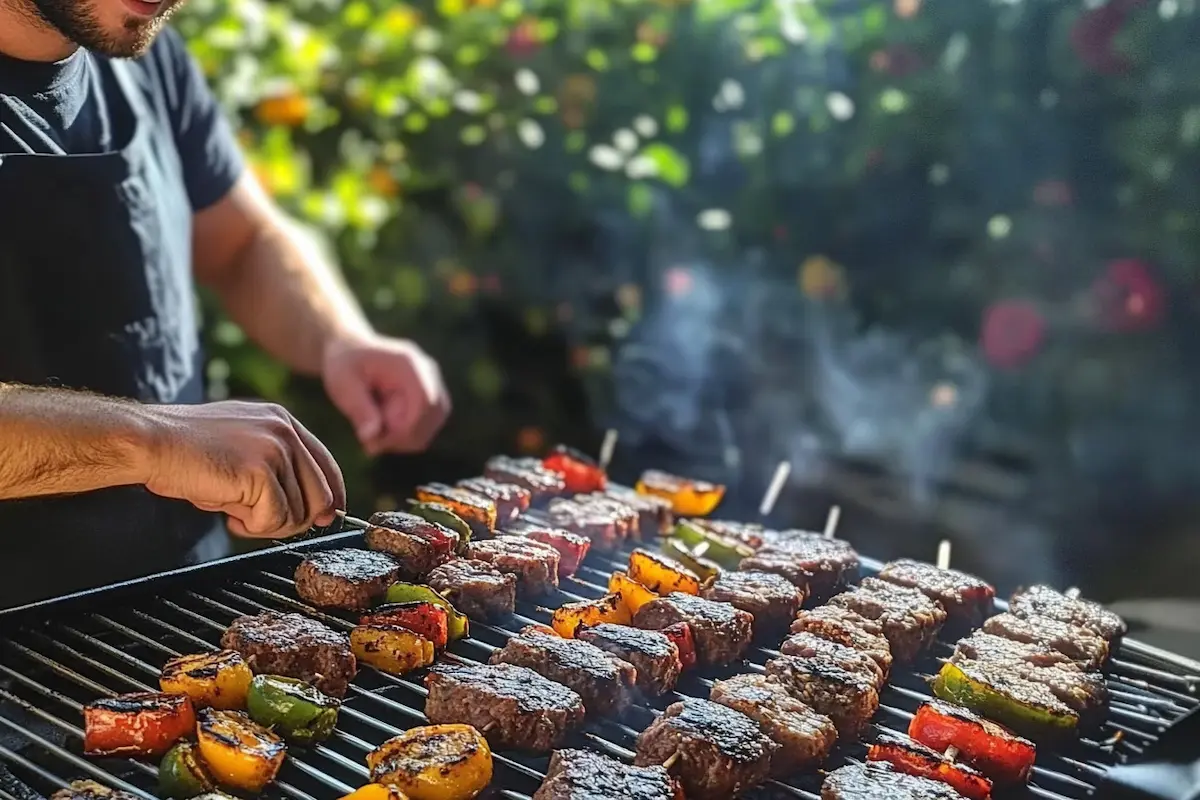If you’ve ever wondered how some people turn backyard barbecues into mouthwatering experiences, you’re about to discover the secret. Learning how to be a pitmaster isn’t just about grilling meat — it’s about transforming a simple skill into an art. Whether you’re a weekend griller or an aspiring BBQ champion, this guide will walk you through everything you need to know to master the pit.

How to Be a Pitmaster: The Ultimate Guide to BBQ Mastery
Before diving into the nitty-gritty, let’s take a moment to appreciate what pitmastery truly means. It’s not just flipping burgers or tossing meat on the grill; it’s a blend of tradition, technique, and a touch of creativity. A pitmaster is the conductor of a smoky orchestra, bringing flavors to life while keeping everyone’s taste buds in awe.
So, what does it take to excel at this craft? Patience, attention to detail, and a relentless passion for great barbecue. But don’t worry — you don’t need to be a professional chef to get started. Even if you’re a beginner, the journey toward becoming a pitmaster is as enjoyable as the destination.
“The secret to a great BBQ isn’t just the meat; it’s the love you infuse into the process.”
Understanding the Role of a BBQ Pitmaster in Perfect Barbecue
Let’s clarify what a pitmaster does. While the term might sound intimidating, a pitmaster is simply someone skilled in the art of barbecue. But they don’t just cook meat — they curate an experience.
What Sets a BBQ Pitmaster Apart From Others?
Being a pitmaster is about more than just grilling. It’s about mastering the interplay of flavors, techniques, and timing to create dishes that leave people craving more. Moreover, a pitmaster must juggle multiple roles, from a meticulous chef to a problem-solving strategist.
Here’s what makes a pitmaster stand out:
- Flavors: Knowing how to balance smoke, heat, and seasoning is key. Without these, your barbecue might fall flat.
- Precision: Controlling the grill’s temperature is essential for consistent results. Therefore, learning how to manage heat zones and air vents becomes second nature.
- Problem-Solving: Adapting to unpredictable challenges, such as wind affecting your smoker or running out of wood chips, requires quick thinking.
In short, a pitmaster is equal parts scientist, artist, and grill whisperer. By balancing these skills, you’ll soon find yourself turning out flawless barbecue every time.
Must-Have Skills for Aspiring BBQ Pitmasters
To become a great pitmaster, you’ll need more than just a grill and some meat. However, developing the right skills doesn’t happen overnight — it takes time, practice, and a willingness to learn.
Here are the core skills every pitmaster should master:
- Patience: Smoking meat can take several hours, and rushing the process often leads to disappointing results.
- Observation: Paying attention to subtle details like smoke color, meat texture, and grill temperature makes all the difference.
- Experimentation: Don’t be afraid to try new rubs, woods, or cooking methods. After all, every experiment teaches you something new.
“Every great pitmaster was once a beginner who didn’t give up after their first failed brisket.”
Moreover, these skills aren’t just useful at the grill. They’ll also help you develop a deeper appreciation for barbecue as both an art and a science.
Exploring the History of Barbecue and Pitmastery

To truly appreciate barbecue, it helps to know where it all began. Barbecue isn’t just food; it’s a story told through smoke and flavor.
The Origins of BBQ Culture and Pitmaster Techniques
Barbecue has roots in ancient cooking methods. Indigenous tribes across the Americas used open fires to roast meat, creating a foundation for modern BBQ. Over time, this technique evolved, becoming a cultural staple in the southern United States.
Did you know the word “barbecue” may have originated from the Taino word “barbacoa”? It referred to a wooden structure used for roasting meat. Talk about starting from scratch!
How the Role of the BBQ Pitmaster Has Evolved
The pitmaster emerged as barbecue became more competitive. What started as a family tradition turned into a profession, with pitmasters perfecting their craft and competing in BBQ contests. These culinary gladiators have become the backbone of barbecue culture, blending tradition with innovation.
“Barbecue isn’t just food; it’s history served on a plate.”
Essential Tools and Equipment for Every BBQ Pitmaster
A pitmaster is only as good as their tools. Think of your equipment as the paintbrushes of your culinary canvas. Without the right gear, you’re just guessing.
Beginner BBQ Tools to Start Your Pitmaster Journey
Getting started doesn’t require a fortune. Here’s what you’ll need:
- Grill or Smoker: Start with a basic charcoal or pellet smoker.
- Meat Thermometer: Ensures perfect doneness every time.
- Tongs and Gloves: For safe handling of hot meat.
- Chimney Starter: A lifesaver for lighting charcoal evenly.
Advanced BBQ Equipment for Perfecting Pitmaster
Once you’ve got the basics down, consider upgrading:
- Offset Smoker: Offers unparalleled smoke control.
- Wireless Thermometers: Monitor temps remotely like a pro.
- Meat Injector: Adds flavor deep into your cuts.
Investing in quality equipment is like upgrading from crayons to oil paints — it makes a world of difference.
Tips for Maintaining BBQ Pitmaster Tools and Grills
Your tools are your BBQ lifeline. Keep them in tip-top shape by:
- Cleaning after every use.
- Seasoning your grill grates with oil to prevent rust.
- Storing equipment in a dry, protected space.
Proper care means your tools will serve you faithfully for years.
BBQ Styles and Techniques Every Pitmaster Should Know
One of the coolest things about barbecue is its global influence. Every region has its own twist, making barbecue a universal language of flavor.
Exploring Regional BBQ Styles Across the U.S.
The U.S. is home to iconic BBQ styles:
- Texas: Beef brisket is king, smoked with oak or mesquite.
- Carolina: Known for tangy vinegar-based sauces.
- Memphis: Celebrates dry-rubbed ribs.
- Kansas City: Sweet, thick sauces and burnt ends steal the show.
Each style reflects the region’s history and preferences.
International BBQ Techniques for Aspiring Pitmasters
Barbecue isn’t confined to the U.S. In fact, some of the best BBQ comes from abroad:
- Argentina: Masters of asado, a wood-fire grilling technique.
- Korea: Famous for marinated meats like bulgogi cooked over open flames.
- Jamaica: Jerk barbecue features bold, spicy marinades.
Trying different styles expands your horizons and flavors.
Selecting Ingredients for BBQ Pitmaster Success
The heart of any great barbecue lies in the ingredients. A pitmaster knows that it’s not just about the cooking technique; the quality and selection of ingredients can make or break the meal. Let’s dig into how to choose the best meats, seasonings, and woods to elevate your BBQ game.
Choosing the Best Cuts of Meat for Barbecue Excellence
Great barbecue starts with the right cut of meat. But what does that mean? Well, not all cuts are created equal. Some cuts shine when slow-cooked, while others are perfect for grilling.
Here’s a cheat sheet for choosing your meat:
- Brisket: Perfect for smoking. Look for a cut with a good fat cap to keep it juicy.
- Ribs: Baby back ribs are leaner, while spare ribs have more flavor.
- Pork Shoulder: A favorite for pulled pork — tender and flavorful.
- Chicken Thighs: Juicier and more forgiving than chicken breasts on the grill.
When in doubt, ask your butcher for advice. They’re the hidden heroes of BBQ excellence.
Seasonings and Rubs to Enhance BBQ Pitmaster Creations
Seasonings are the magic dust of barbecue. A great rub can transform even the simplest cut of meat into a flavor-packed masterpiece.
Here’s what you need to know about rubs:
- Dry Rubs: These are blends of spices that coat the meat before cooking. Common ingredients include paprika, garlic powder, brown sugar, and chili powder.
- Wet Rubs and Marinades: Use these for meats that need extra tenderness or a bold flavor kick.
Experiment with your own combinations. Pro tip: Balance salty, sweet, spicy, and smoky flavors for the perfect rub.
Using Different Woods for BBQ Flavor Mastery
The type of wood you use can dramatically alter the flavor of your barbecue. Think of it like seasoning for your fire.
Here’s a breakdown:
- Hickory: Strong and smoky, ideal for pork and ribs.
- Mesquite: Intense and earthy, best for beef.
- Applewood: Mild and sweet, great for chicken and turkey.
- Oak: Versatile and subtle, a good all-rounder.
Mixing wood types can create a unique smoky profile. Just remember: don’t overdo it! Too much smoke can make your meat bitter.
Mastering BBQ Smoking Techniques Like a True Pitmaster
Smoking is the heart and soul of pitmastery. This is where patience truly becomes a virtue, as smoking meat is a slow, meticulous process.
The Science Behind Smoking Meat as a BBQ Pitmaster
Smoking meat isn’t just cooking — it’s chemistry. The smoke penetrates the meat, breaking down connective tissues and infusing it with flavor. It’s like a flavorful hug from the grill.
Key smoking tips:
- Keep the temperature low (225°F to 250°F).
- Maintain a steady flow of thin, blue smoke — thick smoke can taste harsh.
- Use a water pan to keep the environment humid and prevent meat from drying out.
Controlling Temperature and Smoke Levels
Temperature control is one of the hardest skills to master, but it’s also the most important. Think of it as piloting a plane — small adjustments make a big difference.
- Use a dual-probe thermometer to monitor both the grill’s temperature and the meat’s internal temp.
- Adjust vents to control airflow. More air = higher temps. Less air = lower temps.
- Add wood chips gradually to avoid overwhelming the meat with smoke.
Common Smoking Mistakes and How to Avoid Them
Even seasoned pitmasters mess up sometimes. But here’s how you can steer clear of the most common pitfalls:
- Mistake: Opening the lid too often.
Fix: Trust the process and resist the urge to peek. - Mistake: Using too much smoke.
Fix: Stick to a balance — aim for thin blue smoke, not white clouds. - Mistake: Inconsistent temperatures.
Fix: Keep an eye on the thermometer and adjust vents as needed.
“Good barbecue is like a marathon, not a sprint. Stay patient, and the results will speak for themselves.”

Networking and Competitions for Pitmasters
If you’re looking to take your skills to the next level, consider participating in BBQ competitions. Not only do these events offer a chance to showcase your talent, but they also provide opportunities to learn from other experts.
Moreover, BBQ competitions are a great way to network and build connections in the industry. For example, attending events like the American Royal or Memphis in May can introduce you to fellow enthusiasts and potential mentors. On the other hand, even if you don’t compete, being part of the audience can be equally inspiring.
In addition, competitions can push you out of your comfort zone, encouraging you to try new techniques and recipes. Therefore, they’re an excellent way to grow as a pitmaster.
Frequently Asked Questions about Pitmastery
What Is the Best Way to Start as a Pitmaster?
To begin, focus on the basics. In addition to practicing regularly, invest in a reliable grill or smoker and experiment with different techniques. Moreover, joining BBQ forums and watching tutorials can provide valuable insights.
How Long Does It Take to Master BBQ Techniques?
There’s no set timeline, but consistency is key. Furthermore, patience is crucial, as perfecting your skills often involves trial and error. Remember, even seasoned pitmasters are always learning.
What Are the Most Common Mistakes Beginners Make?
Beginners often struggle with temperature control or over-smoking their meat. To avoid this, use a thermometer and monitor the smoke. Additionally, remember that less is more when it comes to adding wood chips.
Do I Need Expensive Equipment to Be a Good Pitmaster?
Not at all. While high-end tools can make things easier, great barbecue depends more on technique than equipment. In fact, many pitmasters start with basic grills and still create incredible meals.
What’s the Difference Between Grilling and Smoking?
Grilling involves high, direct heat for quick cooking, whereas smoking uses low, indirect heat over several hours. Moreover, smoking adds a deep, smoky flavor that grilling typically doesn’t achieve.
Can I Use an Electric Smoker?
Yes! Electric smokers are beginner-friendly and convenient. However, traditionalists might prefer charcoal or wood smokers for their authentic flavor. Nevertheless, electric smokers are a great option if you value consistency and ease of use.
Embarking on Your Pitmaster Journey
In conclusion, learning how to be a pitmaster is an exciting journey filled with delicious rewards. Moreover, it’s about more than cooking — it’s about community, tradition, and creativity.
Whether you’re just starting or dreaming of opening your own BBQ restaurant, every step is an opportunity to grow. Therefore, embrace the process, and don’t be afraid to make mistakes. Most importantly, enjoy the journey and the smiles your barbecue brings to others.
So, are you ready to light up the grill and begin your pitmaster adventure? The world of BBQ awaits — and the fire is yours to tame.
